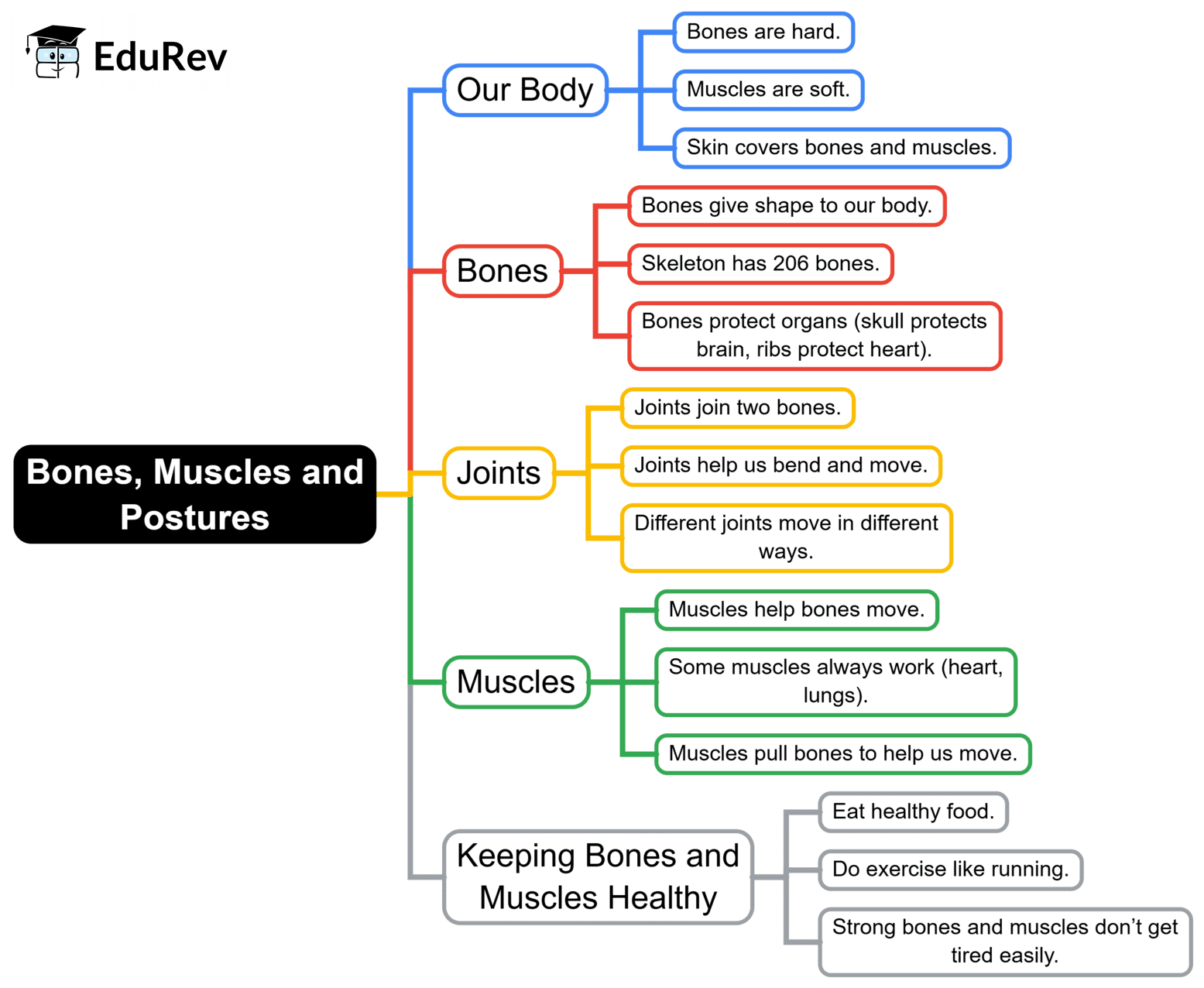Class 2 Exam > Class 2 Notes > Science for Class 2 > Mind Map: Bones, Muscles and Postures
Mind Map: Bones, Muscles and Postures | Science for Class 2 PDF Download

The document Mind Map: Bones, Muscles and Postures | Science for Class 2 is a part of the Class 2 Course Science for Class 2.
All you need of Class 2 at this link: Class 2
|
13 videos|137 docs|24 tests
|
FAQs on Mind Map: Bones, Muscles and Postures - Science for Class 2
| 1. What are the main types of bones in the human body? |  |
Ans.The human skeleton is made up of two main types of bones: long bones and short bones. Long bones, such as the femur and humerus, are characterized by their length and are primarily responsible for supporting weight and facilitating movement. Short bones, like those in the wrist and ankle, provide stability and support, while allowing for some movement. Other types include flat bones, which protect internal organs, and irregular bones, which have unique shapes and functions.
| 2. How do muscles work in conjunction with bones? |  |
Ans.Muscles work with bones to facilitate movement through a system known as the musculoskeletal system. When a muscle contracts, it pulls on the bones to which it is attached via tendons. This contraction causes joints to move, allowing for a wide range of motions. For example, when the bicep muscle contracts, it pulls the forearm up towards the shoulder, demonstrating the coordinated effort between muscles and bones.
| 3. What is the significance of maintaining proper posture? |  |
Ans.Maintaining proper posture is essential for overall health and well-being. Good posture helps align the bones and joints, reducing the risk of injury and strain on muscles and ligaments. It also promotes efficient breathing and digestion, as well as enhances confidence and appearance. Poor posture, on the other hand, can lead to discomfort, chronic pain, and other health issues over time.
| 4. What are the common postural problems, and how can they be corrected? |  |
Ans.Common postural problems include slouching, forward head posture, and rounded shoulders. These issues can often be corrected through exercises that strengthen core muscles, improve flexibility, and promote awareness of body alignment. Activities such as yoga and Pilates, along with regular stretching and strengthening routines, can help individuals develop better posture over time.
| 5. How do lifestyle choices impact the health of bones and muscles? |  |
Ans.Lifestyle choices play a crucial role in the health of bones and muscles. Regular physical activity helps maintain muscle strength and bone density, while a balanced diet rich in calcium and vitamin D supports bone health. Conversely, sedentary behavior, poor nutrition, and habits such as smoking can lead to weakened bones and muscles, increasing the risk of conditions like osteoporosis and muscle atrophy.
Related Searches
















